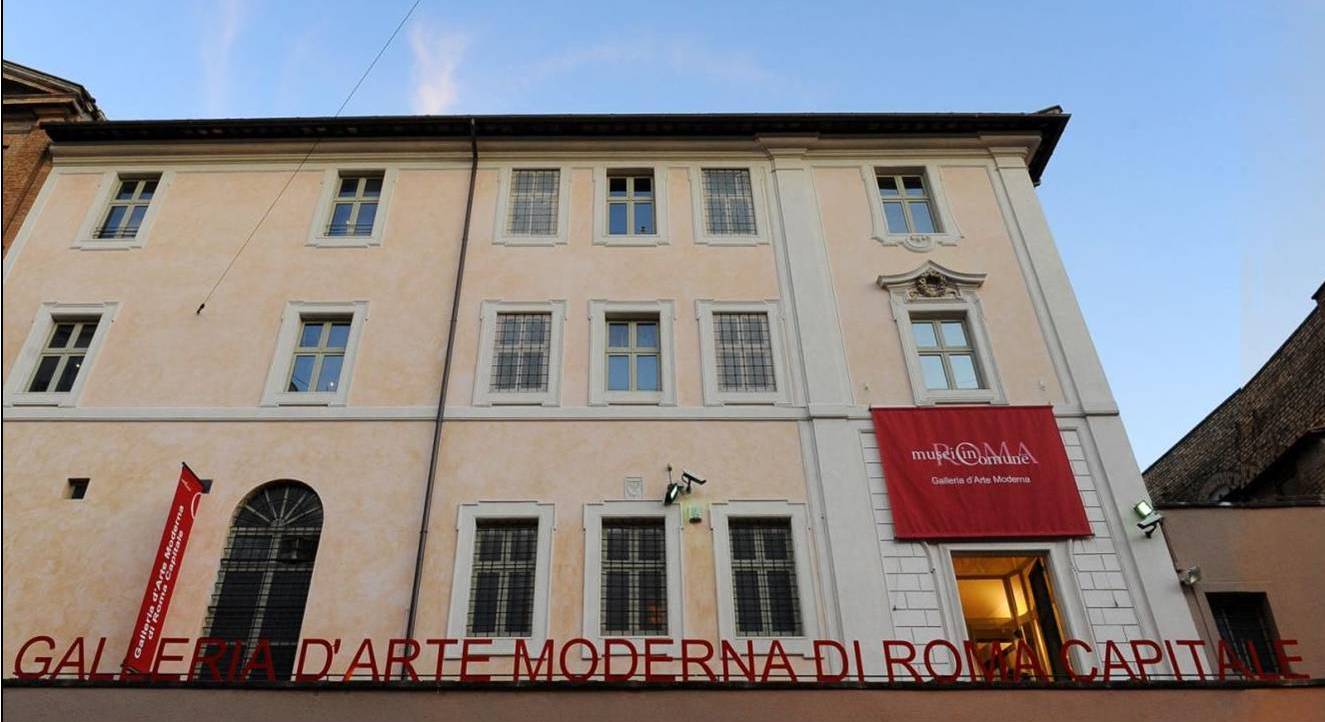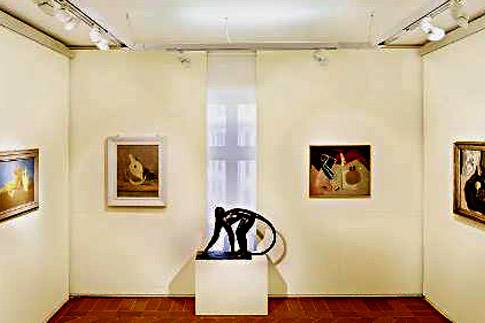Municipal Modern Art Gallery

The Municipal Modern Art Gallery is located in the heart of the historic city of Rome, a few meters from Trinità di Monti, the building that houses the museum is an ancient cloistered monastery, dating back to the end of the century. XVI and adjacent to the church of S. Giuseppe a Capo le Case. The convent, seat of the order of the Discalced Carmelites, was already documented in 1600 in the area called "alle fratte" due to its still marginal position with respect to the town.

The gallery had a complex and troubled history since its official debut in 1925. The initial nucleus of the collections dates back to 1883, when the municipality of Rome began to purchase works of contemporary art in order to "document the Roman artistic environment". The first seat was in Palazzo Caffarelli at the Campidoglio.
In 1925 the accumulation of further acquisitions led to find a new exhibition location; this was identified in the Carmelite convent in via Crispi, annexed to the church of San Giuseppe in Capo le Case, which was partially renovated for this purpose.

The museum - whose collection currently has about 3,000 works, mainly of painting, but also of sculpture and graphics - exhibits 150 pieces that, in rotation, ranging from the nineteenth to the mid-twentieth century, documenting genres and authors of the period: Realism, Symbolism, Divisionism, Roman School, with works by Giorgio De Chirico, Giorgio Morandi, Renato Guttuso, Mario Mafai, Giacomo Balla, Gino Severini, Giuseppe Capogrossi, Alberto Savinio, among others.

Long closed for restoration (since 2003), the museum reopened to the public in autumn 2011, with exhibits that vary periodically.
Today its clear façade is inserted in a dense urban fabric and concludes the ascent of Via Capo le Case offering from the windows an unusual perspective on the dome of San Pietro and on the whimsical baroque forms of the bell tower of Sant'Andrea delle Fratte, the work of Francesco Borromini.

Remodeled several times, the complex in the eighteenth century, when it had its most extensive and definitive conformation, included the cloister, which still exists, and a series of minor artefacts extended to the rear of Via Zucchelli. Passed to the Municipality of Rome in 1879 for the transfer of the monastic community to the College of San Pietro in Montorio, the convent subsequently had numerous and varied destinations - not least for prestige, from 1880 to the 1920s, that of the Industrial Art Museum - and then fall into progressive degradation.

The recovery plan, carried out by the Capitoline Superintendency in the early nineties, transformed a part of it into a museum while maintaining some characteristics of the monastic typology, such as the cloister and the ancient roofs.
A small internal garden is enclosed by the loggia wings of the cloister constituting a forgotten and silent corner, but not without charm, of the historic city.
Video: Municipal Modern Art Gallery
Map: Municipal Modern Art Gallery
Address: Via Francesco Crispi, 24, 00187
Roma (RM) Lazio
Latitude: 41.90382617265995
Longitude: 12.485806345939636
Site: http://www.galleriaartemoderna...
vCard created by: CHO.earth
Currently owned by: CHO.earth
Type: Building
Function: Museum
Creation date: 21-12-2019 10:56
Last update: 20/05/2022